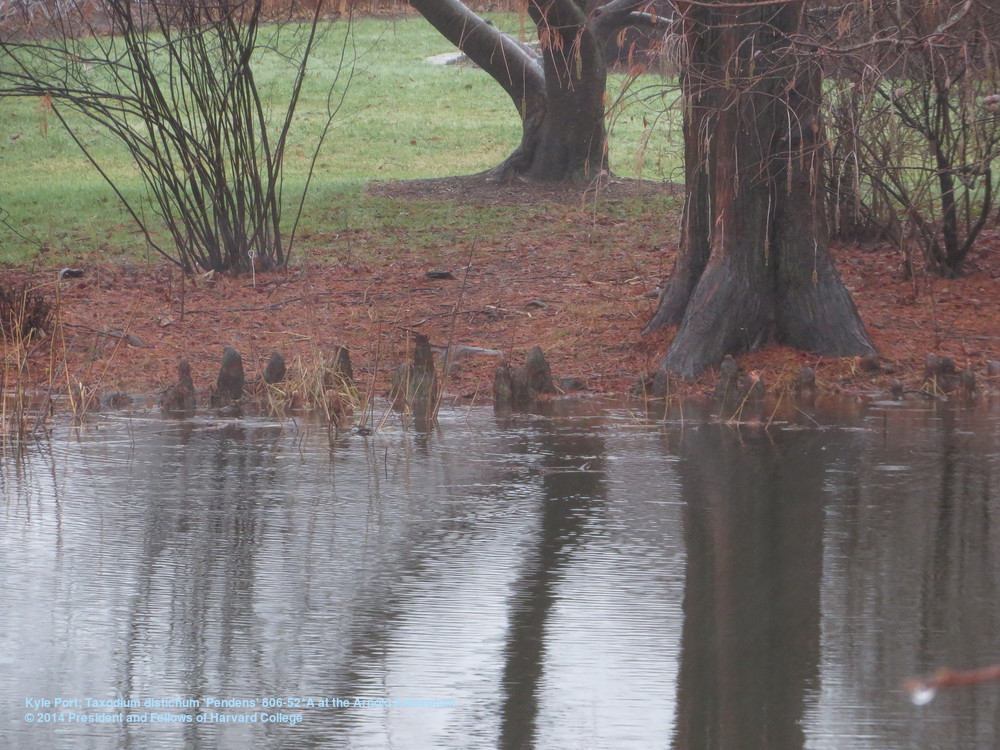
If the needles are dropping off of your cut Christmas tree–most likely a fir (Abies) or pine (Pinus)–you know it’s time for it to go to the compost pile. Likewise, if a fir, pine, or other evergreen conifer (spruce [Picea], juniper [Juniperus], yew [Taxus], arborvitae [Thuja], etc.) growing in your yard dropped all of its foliage it would be a sure sign that something was drastically wrong with the plant. Conifers are supposed to keep their leaves all year, right?
Well, not necessarily. While it’s true that the majority of conifers are evergreen (they retain foliage for a full year or more), the word “conifer” is not synonymous with “evergreen.” There is a small group of conifers that grow and drop a new set of leaves every year, just like maples, birches, or other deciduous trees. There are five genera of these deciduous conifers, four of which grow in the Arboretum.
The larches (Larix) are the largest group of deciduous conifers with 11 species widely distributed in northern regions of North America and Eurasia. Tamarack, aka eastern or American larch (L. laricina), is one of three North American species; it has a wide range in northern tier states from Maine to Minnesota as well as much of Canada and Alaska. Taxodium is another North American genera of deciduous conifers, the most common species being bald cypress (T. distichum), noted for its iconic buttressed trunk and knees [PDF].

The other three deciduous conifer genera are all native to China (and Vietnam in one case), and, curiously, all are monotypic, meaning there is only one species within each genus. Golden larch (Pseudolarix amabilis) is a particularly handsome tree, its common name coming from the vibrant golden yellow its needles turn in autumn before dropping. The grove of golden larch (accessions 3656, 16779, 10764, and 187-94*A) along Bussey Brook at the southwest end of the Conifer Collection is a must-see at the Arboretum. And then there’s dawn redwood (Metasequoia glyptostroboides), a signature tree at the Arboretum (it’s featured on our logo and there’s a magnificent specimen 524-48*AA across from the Visitor Center). Read the whole story of the Arboretum’s involvement in the discovery and distribution of dawn redwood here [PDF].
The remaining deciduous conifer is not hardy at the Arboretum. Water pine, or Chinese swamp cypress (Glyptostrobus pensilis), is native to limited areas in southeast China and Vietnam; it is hardy only to USDA Zone 8 (average annual minimum temperature 10 to 20 degrees F [-6.7 t0-12.2 degrees C]).
For a thorough overview of the gymnosperms–the plant group that includes conifers, ginkgos, and the fascinating Welwitschia, among others–see this Arnoldia article [PDF].